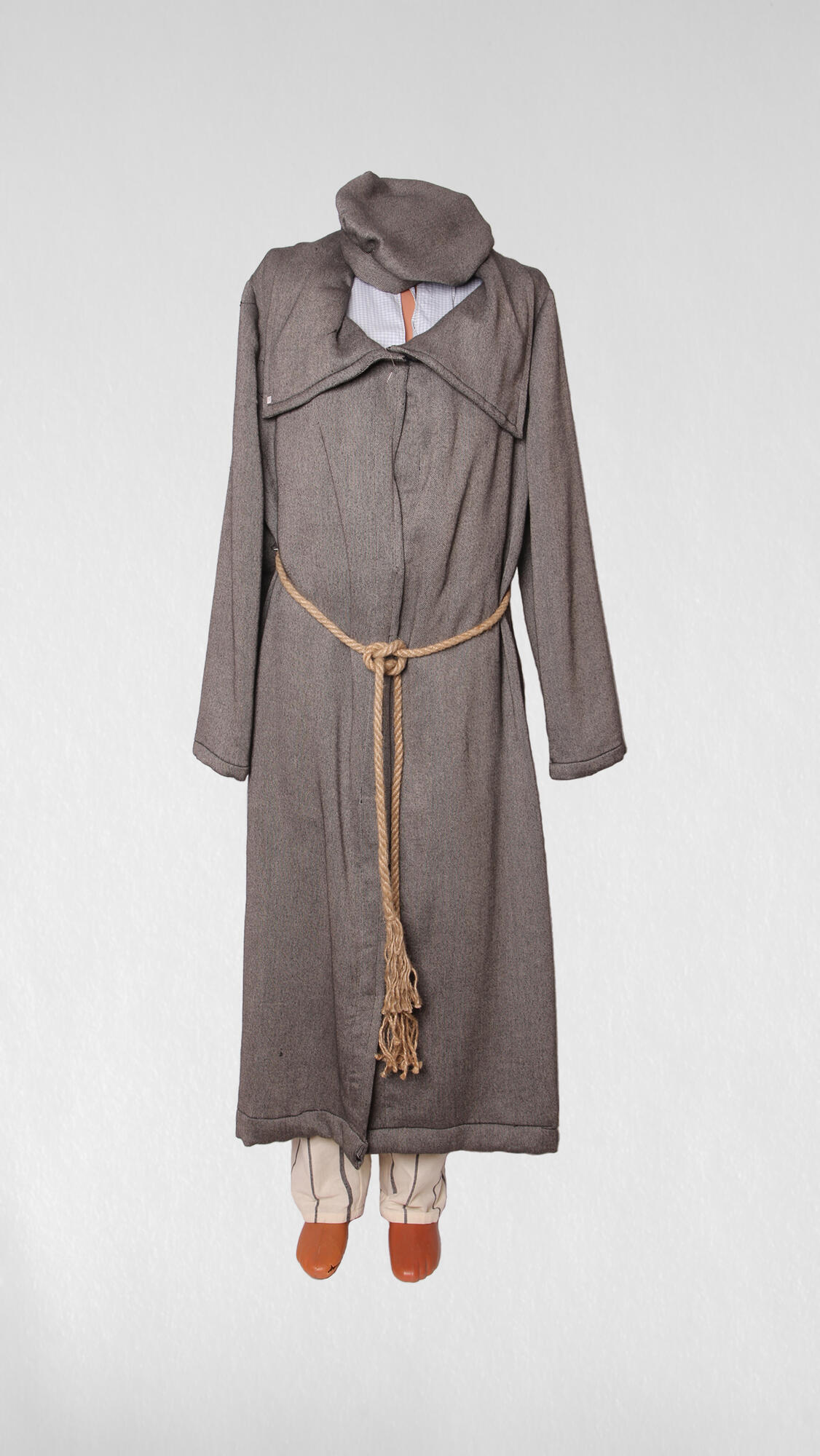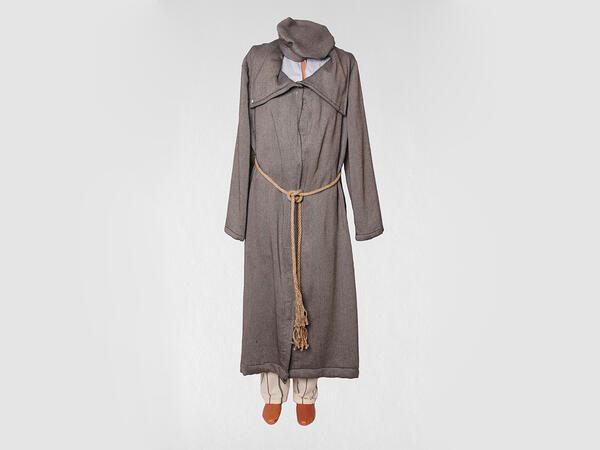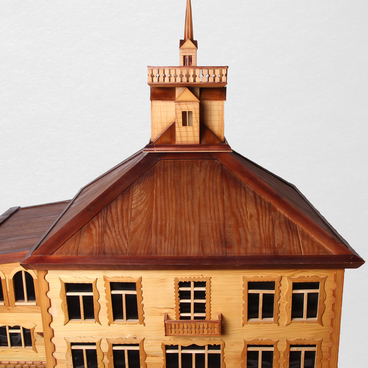The voluntary settlers, craftsmen, explorers were the first to travel along the Siberian Route. Later, Siberia, as the most remote part of the Russian Empire, was used for exile and hard-labor penalty. The exhibition of the museum contains the convict’s clothing of the middle of the 20th century.
Convicts went to their prisons shackled. They wore footwraps, bast shoes or old shoes. Clothing for convicts was made from coarse fabric. They could not legally wear civilian clothes. Usually, they were given quilted jackets and pants, ear-flapped hats, boots with galoshes. The prisoner’s number was sewn on the outwear.
The Siberian Route was divided into equal parts of 20–30 verst (1 verst = 1.067 km or 0.6629 miles) where transit prisons were situated. There was a special order of the prisoner’s transit on the Siberian Route: after every two days of moving, there was one day of rest. Also, there were transit huts — places for temporary housing of convicts. In temporary transit prisons, the convicts rested from four to eight hours and then went to the next stop.
A transit prison was a large territory enclosed with a wooden fence. Usually, there were two or three barracks, a laundry, a security building, where the head of transit was, a kitchen, a chapel, and a cemetery. The transit huts were on every post station.
Despite the bad weather, the convicts had to cover the required distance within the time limit. On the way to Eastern Siberia, the Cossacks on horses convoyed every group of convicts (from 50 to 100 people). Their main task was to accompany all prisoners to the correctional facility.
It was a long and hard journey, and often, convicts died on the road. However, the convoy had to have strict reporting. In some papers of the early 18th century, the rules for convoy were as follows:
Convicts went to their prisons shackled. They wore footwraps, bast shoes or old shoes. Clothing for convicts was made from coarse fabric. They could not legally wear civilian clothes. Usually, they were given quilted jackets and pants, ear-flapped hats, boots with galoshes. The prisoner’s number was sewn on the outwear.
The Siberian Route was divided into equal parts of 20–30 verst (1 verst = 1.067 km or 0.6629 miles) where transit prisons were situated. There was a special order of the prisoner’s transit on the Siberian Route: after every two days of moving, there was one day of rest. Also, there were transit huts — places for temporary housing of convicts. In temporary transit prisons, the convicts rested from four to eight hours and then went to the next stop.
A transit prison was a large territory enclosed with a wooden fence. Usually, there were two or three barracks, a laundry, a security building, where the head of transit was, a kitchen, a chapel, and a cemetery. The transit huts were on every post station.
Despite the bad weather, the convicts had to cover the required distance within the time limit. On the way to Eastern Siberia, the Cossacks on horses convoyed every group of convicts (from 50 to 100 people). Their main task was to accompany all prisoners to the correctional facility.
It was a long and hard journey, and often, convicts died on the road. However, the convoy had to have strict reporting. In some papers of the early 18th century, the rules for convoy were as follows:



